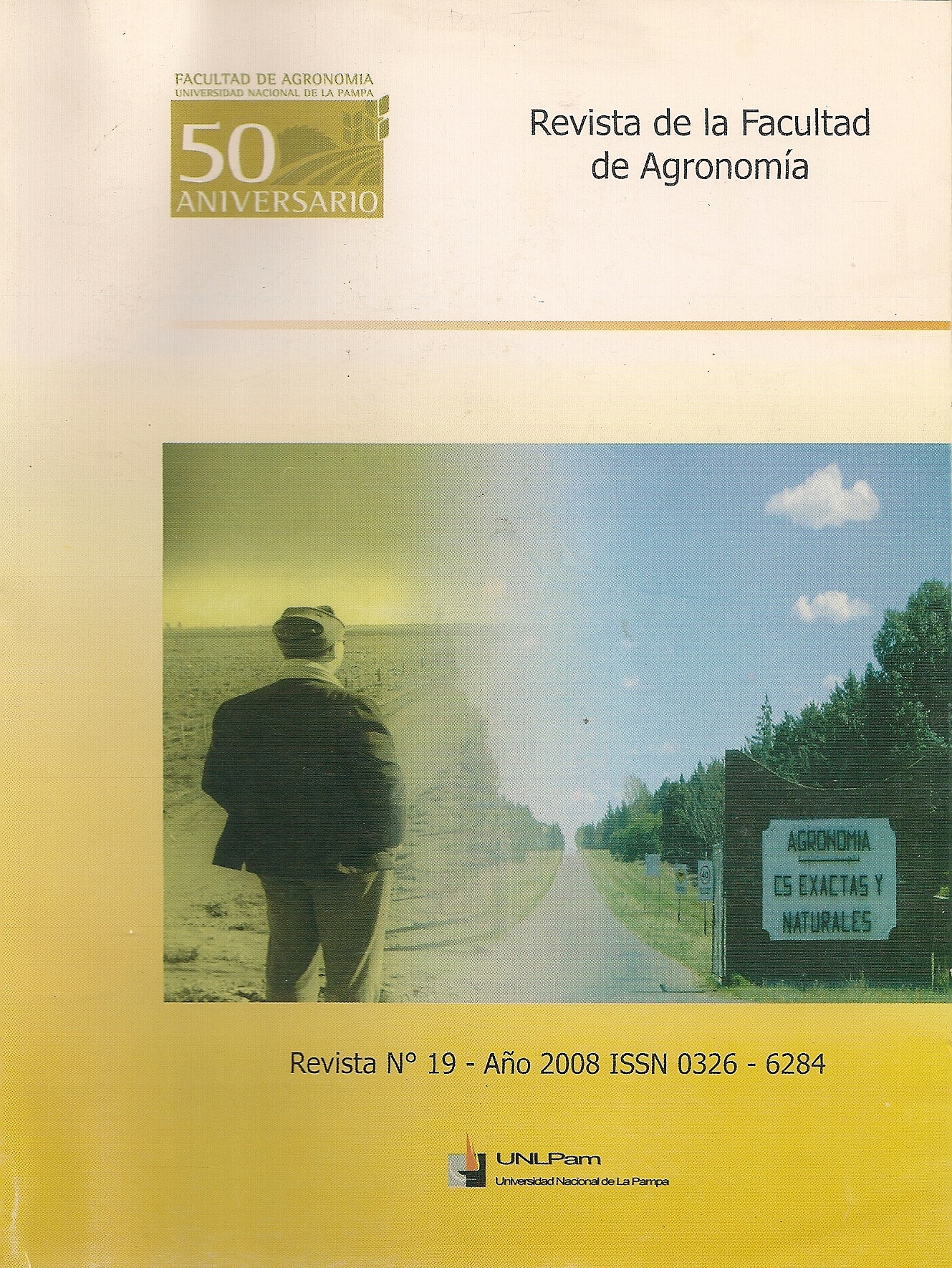Efectos de la nutrición mineral sobre la eficiencia en el uso del agua de verdeos de invierno
Keywords:
eficiencia uso del aguaAbstract
Mineral nutrition has a positive influence on the water use efficiency of winter greens, in relation to dry matter production and its quality. The displacement of livestock farming by agriculture towards soils with lower potential would be leading to lower efficiency in the use of water for the production of forage and meat in mixed systems. The work objective was to evaluate the effect of mineral nutrition (N,P) on forage production and efficiency in water use in rye established in a Haplustol Entic with medium to low contents of OM and available P. To carry out the experience, a design of three blocks was made, each one had nine fertilization treatments (N-P), using plots of 150 m^ (10 X 15m). Three nitrogen fertilization treatments were established (N0= Okg/ha; N40= 40kg/ha and N80= 80l<gN/ha) using granulated urea, applied "broadcast" (03/29/06) and three treatments with phosphorus fertilization. (P0= Okg/ha; P100= 100kg/ha; P200= 200kg/ha) carried out at sowing, with triple calcium superphosphate as a source of phosphorus. The soil with a sandy loam texture, with 41% clay + thymus, presented contents of 1.7% OM and 9 ppm P in the first 20cm of the profile. The average depth of the coarse was 80cm, giving rise to a water retention capacity of 187mm. The consumptive use of greening resulted in 227 and 230mm of water for the extreme fertilization treatments, NO and N80 respectively. A significant N-P interaction was confirmed. There was no phosphorus effect if there was no nitrogen application. The two phosphorus doses (100 and 200) differed from the PO dose when N 40 was applied, while when N 80 was applied, all comparisons between phosphorus doses differed from each other (p < 0.001). Similar behavior was recorded with N, resulting in a response dependent on phosphorus fertilization. Water use efficiency increased significantly from 10.6 kg/ha.mm of dry matter for the control to 21.8 kg/ha.mm for the maximum fertilization treatment. The results allow us to infer the loss of efficiency of forage production, to the extent that comparatively more fertile soils are allocated to agriculture, and the need to increase costs for the use of fertilizers to maintain levels of efficiency in production.
Director: Dr. Alberto Quiroga
Downloads
Downloads
Published
Issue
Section
License
La Editorial de la Universidad Nacional de La Pampa (EdUNLPam) exigirá a los/as autores/as la firma del siguiente documento:
La EdUNLPam lleva a cabo la publicación del artículo: (Título del Artículo) en SEMIÁRIDA Rev.Fac.Agron UNLPam ISSN 2362-4337 (impresa) ISSN 2408-4077 (en línea), del cual el/los abajo firmantes son autores de una o más partes. En el mismo acto, el/los autores entregan exclusivamente a la EdUNLPam todos sus derechos protegidos por las leyes de propiedad intelectual que rigen en la Argentina para reproducir, publicar, editar, fijar, comunicar y transmitir públicamente en cualquier formato o medio impreso o electrónico, inclusive internet, el artículo enviado a publicación e incluirlo en índices o bases de datos nacionales e internacionales. A cambio, la EdUNLPam entrega a los autores la autorización para la publicación o reimpresión con ines académicos y educativos en cualquier libro o medio de divulgación, con la sola obligación de citar el artículo original publicado en la EdUNLPam. Cada autor acuerda en que el material provisto a la EdUNLPam es un trabajo original, que no ha sido impreso o publicado en cualquier otro medio con anterioridad y que no vulnera derechos de terceros. El Primer autor tendrá la posibilidad de leer y corregir el artículo ya editado como “prueba de galera”, pero si el autor no devolviera esas correcciones de la prueba de galera dentro del tiempo especificado, el proceso de producción y publicación podrá proseguir sin la aprobación del autor. El/los autor/es no recibirán compensación monetaria de la EdUNLPam por el uso del material contenido en este artículo y asumen la responsabilidad de las opiniones vertidas en él.






.png)



22.png)



.jpg)




.jpg)
